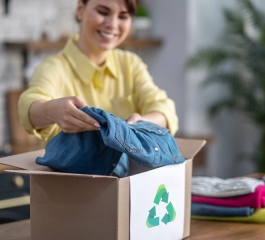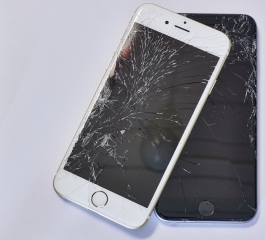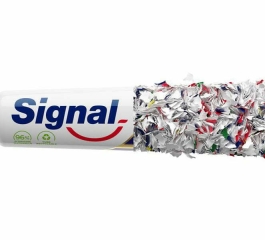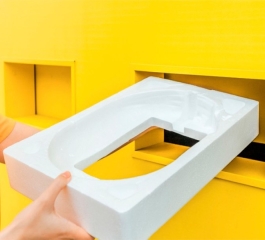Through proper waste separation, you will be contributing to a more sustainable and conscious future. Let’s start by understanding what selective collection is and what the benefits of this practice are.
Step by step to carry out the selective collection of garbage in your home
Properly disposing of garbage at home is essential to ensure cleanliness and preservation of the environment. To help you with this task, we have prepared a complete tutorial with a step by step:
Step 1: Separate the waste
Before starting the collection process, it is important to separate the waste correctly. Organize different containers or garbage bags for each type of material, such as plastic, paper, glass and organic.
This will facilitate the process of recycling and reuse.
Step 2: Make sure the material is clean
To avoid unpleasant odors and maintain hygiene in your home, it is essential to thoroughly wash all containers used to store food, such as margarine jars or pet bottles. This also helps with the recycling process.
Step 3: Consult the local selective collection
Before disposing of your waste, check the separate collection guidelines in your area. Some cities have different collection schedules for recyclable and organic waste, so it’s important to be aware of the correct dates and times.
Step 4: Proper bagging
Be sure to use sturdy, properly sized garbage bags to store your waste. Avoid overloading the bags, as this could cause tears and leaks.
p>
Step 5: Correct destination
Place the garbage bags on the sidewalk or in the place indicated for collection. If your city has a selective collection system, be sure to properly separate your recyclables from non-recyclables.
Step 6: Waste reduction
In addition to conventional garbage collection, it is important to look for ways to reduce the amount of waste produced. You can start by choosing to buy products in bulk, avoiding the excessive use of disposable packaging and composting organic waste.
Step 7: Beware of dangerous products
Chemical products, such as batteries and fluorescent lamps, require special disposal, as they can cause damage to human health and the environment.
Consult specific collection points in your city or contact the responsible bodies to dispose of these materials properly.
By following these steps, you will be contributing to the reduction of environmental impacts caused by incorrect waste disposal.
Always remember to seek information on separate collection and disposal practices in your area to ensure you are acting in accordance with local regulations.
Conclusion
By separating waste into different categories such as paper, plastic, glass and metal, it is possible to recycle these materials and reduce the amount of waste going to landfills.
In addition, selective collection contributes to saving natural resources, as recycling prevents the extraction and production of new materials.
Adherence to selective collection at home is an attitude that can be easily incorporated into everyday life, but that makes a big difference.
It is important to follow the guidelines of the city hall or company responsible for the collection, how to use the appropriate bags or containers separately for each type of garbage.
In conclusion, selective waste collection at home is an essential practice to preserve the environment and ensure a more sustainable future.
By correctly separating and disposing of waste, we are contributing to reducing the amount of waste, saving natural resources and preserving nature.
It is therefore crucial that everyone does their part and adopts this practice on a daily basis.









